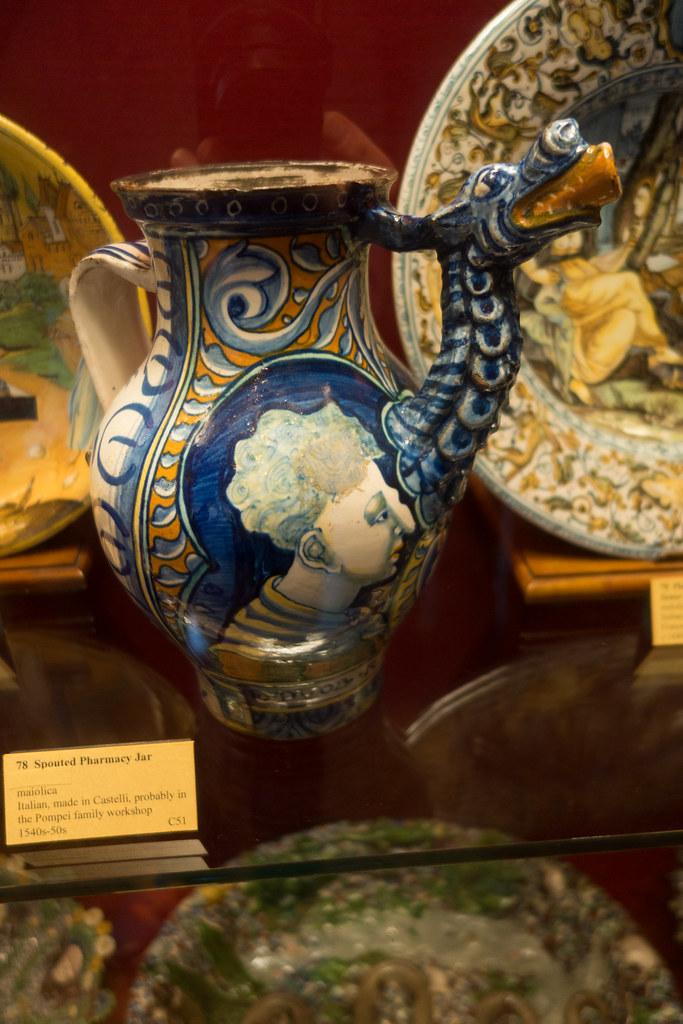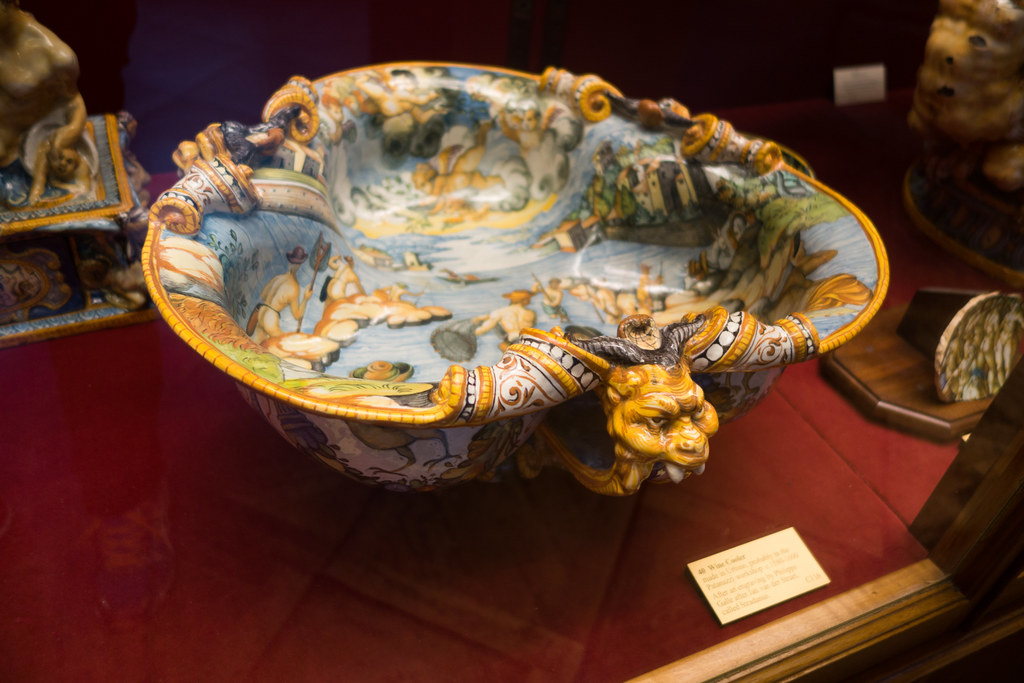Grotesque is a term that defines a particular mural or sculptural decoration involving mixed animals, humans, and plant forms.
The word derives from the Italian grotteschi, referring to the grottoes (caves) in which these decorations were found c. 1500 during the excavation of Roman houses such as Nero’s Golden House. Grotesque decoration was common on 17th-century British and American furniture.

Image source: https://search.creativecommons.org/photos/70ff16e4-72ff-4f90-8d52-4c09eb7ed9f0 by Bo&Ko
The word grottesco in the Renaissance period was used to designate a specific ornamental style suggested by antiquity, understood not only something playfully gay and carelessly fantastic but also something ominous and sinister in the face of a world different from the familiar one.
A world in which the realm of inanimate things is no longer separated from those of plants, animals, and human beings, and where the laws of statics, symmetry, and proportion are no longer valid.
Grotesque Art

Image source: https://search.creativecommons.org/photos/6aba3c00-70e1-45eb-a016-a7a8c449fbbf by uploaded to Wikipedia by en:User:VAwebteam
The artists began to give the tiny faces of the figures in grotesque decorations strange caricatural expressions, in continuation of the medieval traditions of the pranks in the border decorations or the initials in the illuminated manuscripts.
From this, the term began to be applied to larger caricatures, such as those of Leonardo da Vinci, and the modern sense began to develop. It is first recorded in English in 1646 by Sir Thomas Browne:
“In nature, there are no grotesques”
The term was also used for miniature half-human cartoons drawn in the margins, and even the figures carved on the buildings are called “grotesques”.

Image source: https://search.creativecommons.org/photos/56e1ec76-f33c-4e89-951b-a965d6fac12b
A boom in the production of grotesque works of art characterized the 1920-1933 period of German art. In the art of contemporary illustration, the “grotesque” figures, commonly appear in the genre grotesque art, also called fantastic art.
In Architecture
The term “grotesque”, in architecture, indicates a carved stone figure, often confused with gargoyles, but while gargoyles are figures that contain a jet of water through their mouth, grotesques do not.
This type of sculpture is also called a chimera. More precisely, the term gargoyle refers to mostly creepy figures specifically sculpted as spout endings that channel water away from the sides of buildings.
In the Middle Ages, both to refer to gargoyles and grotesques, the term babewyn was used, which comes from the Italian word babbuino, which means “baboon”.
Engravings, woodwork, book illustration, decorations
Soon the grottesche appeared in marquetry (precious woodwork), in the maiolica produced mainly in Urbino from the late 1520s, then in the illustration of books and in other decorative uses.

Image source: https://search.creativecommons.org/photos/41a877fa-688e-41cc-84a8-3f01e14e3445 by quinet

Image source: https://search.creativecommons.org/photos/103aa4e1-3e14-4662-be22-2ef389cd081b by quinet
At Fontainebleau Rosso Fiorentino and his team combined grotesques with the decorative form of the strap, the representation of leather straps in plaster or wood moldings, which forms an element in grotesques.
In the 17th and 18th centuries, the grotesque embraced a wide field of artistic experimentation and teratology, or the science of monsters. The monstrous, for example, often recurs as a notion of play.
Info source:
https://en.wikipedia.org/wiki/Grotesque
http://www.britannica.com/art/grotesque-ornamentation
http://www.jbdesign.it/idesignpro/mannerism%20grotesque.html#grotesque
http://www.liquisearch.com/grotesque
please also visit www.idesign.wiki
